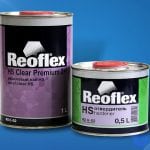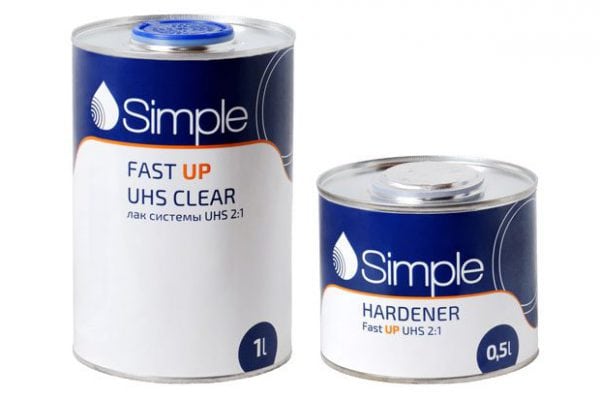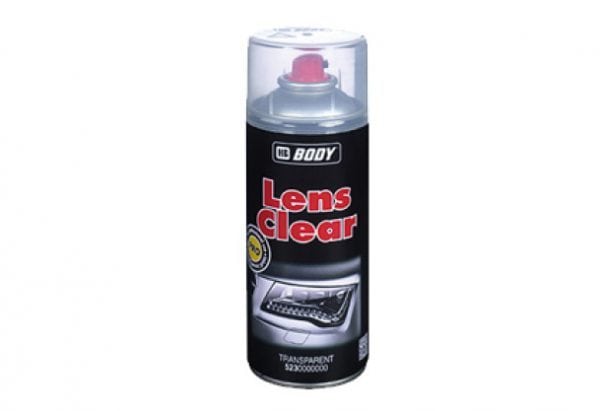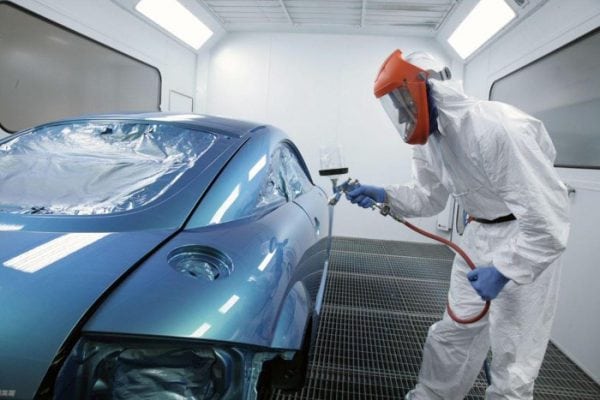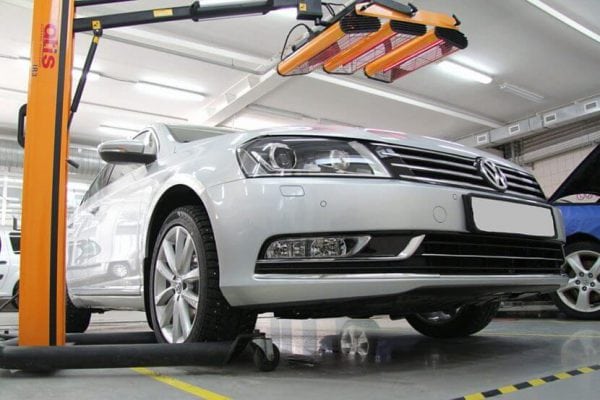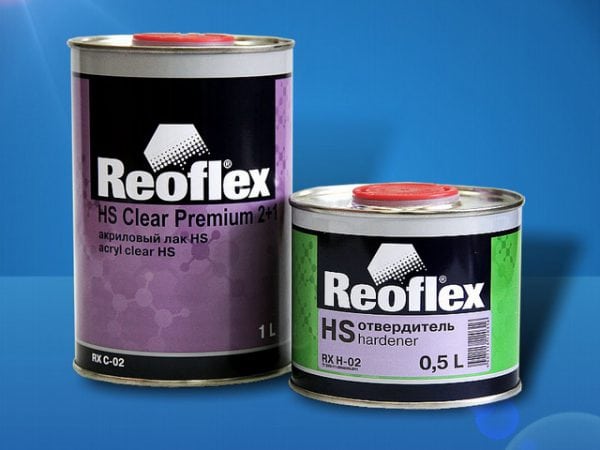Modern cars have a three-layer coating of body parts. Their surface is coated with a special transparent varnish that protects the paint and provides excellent decorative functions. The quality of the applied varnish largely determines the longevity of the repair. Professionals use only high-quality coatings (shellac), and the price is not a determining factor at all. To process the car body, HS lacquer or other material modifications are purchased.
Classification of varnishes
All car varnishes are marked with various letters (abbreviation). What is the difference between the two? The labeling method is based on the solids content - the most important material parameter. Also, the marking takes into account the concentration of the polymer, there are differences in the hardness of the product.
All varnishes are divided into such groups by dry residue:
- LS (low content). They have high fluidity, high consumption, emit a lot of volatile components, that is, they are not environmentally friendly. Most countries are no longer in use.
- MS (average content). Up to ½ composition - organic diluents. This type of varnish is transparent, perfectly polishes, gives a beautiful shine, but requires application in 2-3 layers due to the liquid texture. Most often used for partial painting of cars.
- HS (high content). They include 60% solids, are environmentally friendly, economical, and dry quickly. They can be applied in 1.5 coats (first thin, second full). The difference between varnishes is that they are more difficult in subsequent processing. The material is very popular for secondary repairs and airbrushing.
- UHS / VHS / HD. These are the latest generation varnishes that require drying at high temperatures and provide high-quality coating. They have an ultrahigh amount of solids.
to contents ↑The higher the dry residue, the less volatile substances penetrate the air, therefore, the less varnish will be toxic to the master and the atmosphere. There are also special automotive varnishes for polishing headlights (for example, BODY Lens Clear) - they are produced in aerosols and are used only for their intended purpose.
MS varnish application
There are many popular varnishes in this series. These include Vika ("Vika"), Brulex ("Brulex"), Reoflex ("Reoflex"), Quickline and others. The application and drying of such products practically do not differ from those of acrylic auto enamels: at least two layers with complete drying are also required. The best conditions for using MS materials are:
- ambient temperature - from +10 to +20 degrees;
- air humidity - up to 80%.
The material is applied to the prepared surface using a spray gun. Drying is permissible to carry out in a natural way, to speed up the process, hot forced drying is done.
With increasing temperature, the rate of solvent evaporation increases, and a film forms on the surface. Those solvent particles that are still under the film rush into the atmosphere later.They inevitably form micro-holes on the film - the pores of the varnish, which are visually invisible, but in the future can lead to negative consequences.
The coating will cease to shine over time, it will become dull and rough. Therefore, it is recommended not to carry out hot drying immediately after applying the layer - it is necessary to wait for the evaporation of more volatile substances so that there is no "boiling effect". The optimum exposure time is 10 minutes, with poor ventilation in the room - up to 15-20 minutes, while the top of the paint should be dry to the touch. Then apply another or two layers of varnish MS.
to contents ↑HS-coating
Varnishes with a high concentration of solids contain less organic solvents, denser in texture, less flow. Work with them differs from that carried out with MS tools. Popular brands are Novol ("Novol"), Solid ("Solid"), Dyna 6000 and others.
The technology of applying the material involves the so-called one and a half layer application, but novice masters often can not cope with the technique. It is difficult to immediately determine the desired thickness of each layer and not be mistaken. As in the previous case, it is important to perfectly perform the first layer so that the finished coating is of high quality. A common mistake is to make a very thin, dry first layer and then apply a thick layer. This leads to the appearance of an “orange peel”, or shagreen, as well as the following defects:
- drips;
- drops;
- boiling;
- lack of the desired shine.
The application of two thick layers of material is no less harmful, as this gives unnecessary roughness to the coating. The rules for using HS products are as follows: the first layer is thin, after which a half-gloss effect should be obtained. After 5 minutes, make a second layer, of full thickness, wet. If the first coating still turned out to be full, it must be allowed to dry completely (15 minutes), then dried in air or using infrared drying devices.
Features of the application of HS varnishes:
- there is a need to add plasticizers;
- if a more matte shade is needed, matting substances should be added;
- viscosity varies with temperature - when applying cold varnish during drying, defects may appear, so the ambient temperature should be optimal (closer to +20 degrees).
Application of UHS / VHS varnishes
Volatiles in this group of materials are even less, and the dry residue is higher. The risk of smudges and other defects in their application is low. Usually one coat is enough to make the body cover look perfect, as it can be applied with sufficient thickness. Less often, 1.5 layers are performed:
- the first is literally weightless;
- the second is full, applied immediately, without aging.
This technique of car varnishing will help to impregnate the base, which will reduce the risk of varnish micro-slipping. Varnishes of this group do not require dilution, since their viscosity is already normal. In rare cases, the material is bred, but not more than 5%. A stronger dilution of the product will increase the risk of sagging and sagging, often leading to boiling of the film.
Drying of the coating is best done in a special chamber - this will seriously improve the performance. Modern varnishes are very demanding on drying, so in garage conditions it can be difficult to cope with work.
The thick layer of varnish should be thoroughly dried, otherwise the necessary hardness will not be gained. Before drying, they withstand the coating for 20 minutes in air, always with good ventilation. Next, the varnish is dried in an infrared cabin.
Varnish is the final layer of automotive coating, and the slightest mistake in applying it will result in a big problem. Therefore, it is important to choose the right and apply the product correctly so that the repaired car looks perfect.

